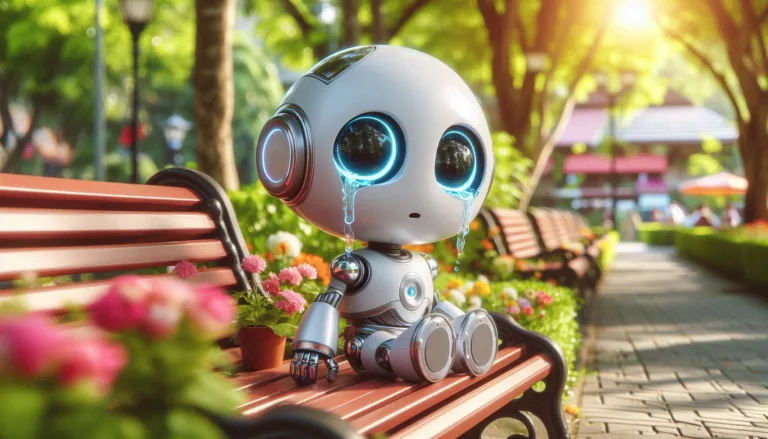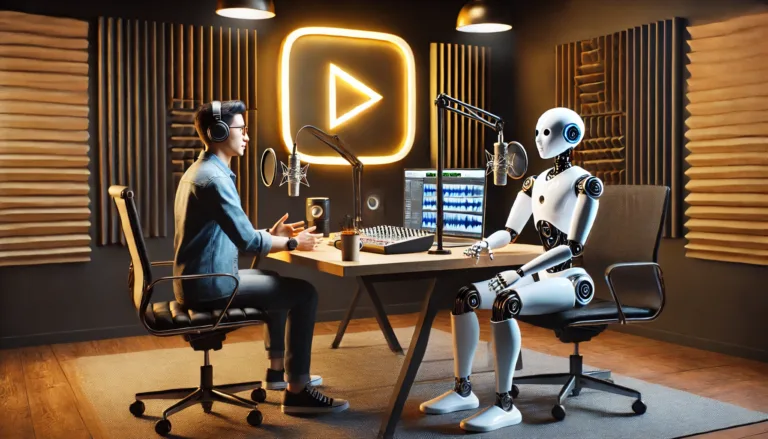Artificial Intelligence (AI) has shifted from science fiction to an influential force shaping our daily lives. Its rapid development and integration into industries raise questions about its impact on employment. While AI can automate tasks and increase efficiency, its progress raises concerns about job displacement. However, the rise of AI also creates unique opportunities and roles in the job market. This article explores AI’s current and future influence on jobs, highlighting both the potential losses and the types of roles it can create.
How AI is Disrupting Jobs Now
AI is already changing the job landscape, particularly in roles involving repetitive tasks. AI-powered systems, like machine learning algorithms and robotic process automation (RPA), are transforming industries by automating time-consuming tasks. Currently, industries such as manufacturing, retail, and customer service are most affected by AI-driven automation.
Examples of Job Displacement by AI
- Manufacturing: Robots and AI systems streamline production lines by handling repetitive tasks with precision. Machines now assemble products, perform quality control, and even manage logistics, leading to a decline in manual labor roles.
- Retail: The retail industry faces significant change with AI-enabled self-checkout systems, inventory management software, and personalized marketing. These tools reduce the need for cashiers and in-store staff, creating a demand for fewer human workers.
- Customer Service: Customer service is another field where AI’s impact is apparent. AI-driven chatbots answer queries, assist with complaints, and handle routine tasks, reducing the need for human agents. By managing these basic inquiries, chatbots allow companies to operate with fewer customer service representatives.
- Data Analysis and Processing: Companies increasingly use AI to analyze large datasets and identify trends. Machine learning models can interpret data faster than humans, reducing the need for data entry jobs and other low-skill roles within data processing.
AI and the Future of Jobs: An Outlook on Possible Disruptions
In the future, AI’s sophistication may extend its influence to more complex roles. While current AI capabilities primarily handle repetitive tasks, advancements in machine learning and natural language processing (NLP) may enable AI to take on roles requiring judgment, creativity, and decision-making.
Potential Areas of Future Job Displacement
- Healthcare: The healthcare industry may witness automation in diagnostic roles, where AI-driven systems analyze medical images, detect patterns, and diagnose diseases. Although AI will likely serve as a support tool for doctors, it could diminish the demand for certain diagnostic roles, such as radiology technicians.
- Legal Services: AI systems already assist with legal research, contract analysis, and document review. With improved accuracy and contextual understanding, AI could handle even more responsibilities in law, reducing entry-level roles for paralegals and legal assistants.
- Financial Analysis: In finance, AI models can predict market trends, assess risks, and create investment strategies. As these algorithms improve, they could replace some analytical roles, especially in asset management and risk assessment.
- Transportation: Autonomous vehicles are a key area where AI could lead to job displacement in the future. AI-driven vehicles could replace drivers in logistics, public transportation, and delivery services as safety and efficiency increase.
- Education and Training: AI-driven tutoring systems may provide one-on-one support for students, assessing individual progress and customizing lessons. Although educators may always play a crucial role, AI could reduce the demand for tutors and teaching assistants.
How AI Will Create New Job Opportunities
Despite concerns about job displacement, AI’s evolution opens avenues for new job creation. The development, maintenance, and ethical management of AI systems require skilled human oversight, creating a demand for roles that support and enhance AI.
Emerging Jobs and Fields Driven by AI
- AI Development and Engineering: As AI becomes integral to business operations, there is a rising need for AI specialists, machine learning engineers, and data scientists. These professionals design, build, and train AI systems, ensuring they meet ethical and technical standards.
- Data Labeling and Curation: Machine learning models require extensive datasets to learn from. Data labeling and curation jobs ensure AI systems are fed with accurate, well-structured data. Roles in data annotation, cleaning, and categorization have seen growth due to this demand.
- AI Ethics and Policy: With AI’s influence on society, ethical concerns arise regarding privacy, bias, and accountability. Roles focused on AI ethics, compliance, and policy are gaining importance to ensure AI technologies respect human rights. Companies hire AI ethics officers to oversee ethical standards and comply with regulations.
- Human-AI Interaction Design: For AI systems to integrate seamlessly into human tasks, interaction design is crucial. Jobs in user experience (UX) design, human-computer interaction, and AI-driven product design ensure AI systems are intuitive and accessible to end-users.
- Cybersecurity Experts: As AI systems proliferate, cybersecurity threats increase. Cybersecurity experts are crucial in protecting sensitive data and securing AI models from malicious attacks. AI’s presence in critical infrastructure, financial systems, and personal devices creates a demand for skilled cybersecurity professionals.
- AI Trainers and Facilitators: AI trainers teach systems how to interpret specific tasks or processes. These roles involve providing feedback on AI performance, setting parameters, and refining models. Such jobs are especially relevant for companies deploying conversational AI systems, like virtual assistants.
Balancing Job Loss with New Opportunities
The balance between AI-driven job loss and new opportunities remains complex. While AI eliminates some jobs, it also generates demand in fields related to technology, data, and ethics. Individuals and organizations should adapt to these shifts, investing in skills and knowledge that align with the emerging landscape.
Upskilling and Reskilling as Solutions
To mitigate AI’s negative impact on jobs, governments and companies can promote reskilling and upskilling programs. These initiatives equip workers with relevant skills for AI-related roles. For instance, manufacturing workers can transition to operating and maintaining AI-powered machinery through targeted training programs.
Conclusion: Adapting to AI’s Dual Impact on Employment
AI undoubtedly disrupts traditional roles, and its capabilities suggest future job losses may extend to more specialized fields. However, AI’s transformative power creates new roles requiring creativity, ethical oversight, and technical expertise. Understanding this dual impact allows society to prepare for changes, embracing opportunities while addressing challenges AI poses to employment.
For workers and companies, AI represents both a challenge and an opportunity. Embracing this dual impact involves developing skills that complement AI technologies and seeking out emerging fields within AI-driven industries. By navigating AI’s evolution proactively, we can ensure that, while some jobs may fade, the door opens for innovative, fulfilling roles that shape the future of work.




